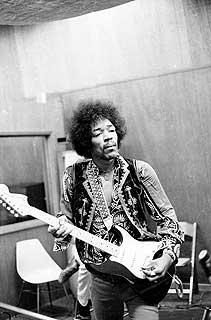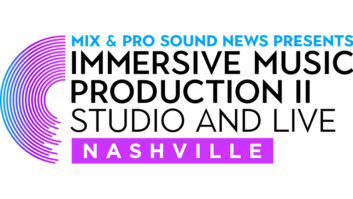
Photo: Chuck Boyd/Authentic Hendrix
Fans of Jimi Hendrix’s unparalleled guitar wizardry have a new reason to rejoice: The new Sony/Legacy release Valleys of Neptune, which comprises 12 rare and (mostly) unreleased studio tracks, is the most exciting “find” to come from the Hendrix estate in many years. You are to be forgiven if you have been unable to keep up with the dozens upon dozens of posthumous releases — authorized and not — that have appeared since Hendrix’s death in 1970. I consider myself a serious fan and even I gave up many years ago, frustrated by the uneven quality of the releases and many overlaps. In the past few years, however, the Hendrix house seems finally to have been put in order, with Jimi’s sister, Janie, as a capable curator at the head of Experience Hendrix, LLC, and archivist John McDermott and Jimi Hendrix’s principal engineer, Eddie Kramer, spearheading what appears, on the basis of Valleys of Neptune, to be a sensible (and sensitive) approach to getting some gems from the hundreds of hours of Hendrix studio recordings into our eager little paws.

The genesis of this particular project was some tapes recorded at London’s Olympic Studios in mid-February 1969 and unearthed not too long ago by McDermott. “That was a great windfall,” comments Kramer from his L.A.-area home. “It shows the Jimi Hendrix Experience [Hendrix, bassist Noel Redding, drummer Mitch Mitchell] at their peak — this was the last set of recordings the band did together at Olympic. It’s live, it’s on the floor, Jimi’s singing is great, the band is playing fabulously. They’re prepping for what was to become the famous Albert Hall concert [February 24, 1969].” So are they rehearsals? “I wouldn’t call them rehearsals exactly; it’s a lot more than that. He’s trying out stuff. He wanted to hear what some of the material would sound like with different arrangements. He’s experimenting. It was a test.”
The year 1969 turned out to be a transitional one for Hendrix. Though the Experience would tour and record together until the end of June, Hendrix’s relationship with bassist Redding was starting to unravel, which explains why on some Hendrix sessions as early as April ’69, bassist Billy Cox — an old Army buddy of Hendrix’s — appears instead of Redding. “In general during 1969,” Kramer offers, “Jimi was interested in trying new things. He was looking for new directions after the smashing success of Electric Ladyland [his epic 1968 double-album], and this project [Valleys of Neptune] reflects that. He played with a lot of different musicians and he also did a lot of jamming in the studio. We’re lucky Jimi loved to record.”
Though Kramer’s association with Hendrix goes back to Are You Experienced? in 1967, the two did not work together much during 1969. “What would happen in ’69 is, he would call me, and say, ‘Hey, man, can you come up and help us out; this studio’s not too together.’ So I’d jump in a cab, run uptown to wherever he was working and go help him out for a couple of days, and he’d be happy and he could keep on working with someone else. Then I had to get back to my other stuff, because during that time I was building Electric Lady Studios [for Hendrix]; I was pretty consumed with that. And I was also working as an independent engineer with Led Zeppelin and various other bands.”

Eddie Kramer has been shepherding posthumous releases, including Valleys of Neptune.
Still, even with Kramer not around, Hendrix’s recorded work was in good hands — the 1969 Olympic sessions were tracked by George Chkiantz, who’d been an assistant of Kramer’s previously “and learned the way I liked to record Jimi, though obviously with his own tweaks to it,” Kramer says; and the several tracks on the CD that come from Record Plant in New York City were cut by studio co-founder Gary Kellgren, “who was a fabulous engineer,” Kramer says. “He was responsible for bringing me over to the States in 1968 [Electric Ladyland was cut at Record Plant], and we shared similarities in our approaches to recording, though he had a slightly different take on it. But the way I mixed it is the way I hear it and the way I think Jimi would have liked to have heard it.” Kramer mixed at two different studios over the course of many months — at LAFX on “a lovely vintage API that’s been updated and tweaked, and the stereo bus is wonderful”; and at Legacy in New York (now known as MSR Studios since its merger with Manhattan Sound Recordings last fall) on the SSL 9000J in Studio C.
Kramer had his hands full working with the variety of tapes, which ranged from 4-track to 16-tracks, and were recorded from 1967 (a song called “Mr. Bad Luck,” originally intended for Axis Bold As Love, produced by Chas Chandler and recorded by Kramer at Olympic) all the way to 1987. Wait a second — 1987, 17 years after Hendrix’s death?
Kramer explains: “In ’87, Chas Chandler had the tapes — he had salvaged them from Olympic — and he said to Noel and Mitch, ‘Hey, do you think you guys could come and maybe top your performances on a few things?’ Overdubbing was never a problem — we always looked at that as part of the process — and they said, ‘Maybe we could.’ And they did in some cases and maybe not in others. But what I did was — certainly in terms of Mitch’s performance — I would integrate his overdub performance with his previous one; take the best bits and make one nice composite that was really very strong.” Did Mitchell play the same in ’87 as in the late ’60s? “Not completely — it’s similar ideas, and it’s sometimes better in ’87, other parts not. But this is where modern technology is wonderful — where I can take the best bits of both and combine them. I’m using technology that, I assure you, if Jimi were alive today, he would embrace wholeheartedly.
“The stuff from Olympic was half-inch 4-track BASF LR56 or Agfa,” Kramer continues, “and then we transferred to Pro Tools using the Burl Audio [B2] A-to-D converters, which I love; they’re wonderful, and the reason I like them is they have transformers in them and they don’t sound like A-to-D converters — they sound very analog-ish.
“Once we’re in Pro Tools at 24/96, then the fun begins, because now we can address the issue of clicks and bangs and farts and whistles,” he says with a laugh. “I’m a huge fan of the Waves stuff; put aside the fact that I endorse them and have my own product through them — a new set of plug-ins: the Helios and the Pie limiter. I use Waves because it’s fantastic for cleaning things up. Now, when I say that I don’t mean in the sense of making it sound pristine; I use it purely to make sure there are no extra pieces of junk in there that don’t really help the music. I want the music to come out, but I don’t want to adjust or tonally tweak Jimi’s amp. I want it to be like his amp was, but better, and make it sound full and fat and in your face. So I’ve worked out a system that incorporates the very best of the analog and digital worlds that I feel very happy and comfortable with. I love the Millennia stereo EQ on the bus, and I have an older SSL limiter from the previous generation — before they started messing it up — and all the usual stuff: 1176s, LA-2As, Pultecs; you name it. So I’m adding compression, EQ, reverbs, but all of that is treated with respect. We mix down to tape at 15 ips Dolby SR and then I transfer it back through the Burl back into Pro Tools, so I always have both sets of mixes. My goal is always to make it sound like Jimi’s in the room with you.”
Asked to pick the most challenging song on the record from a technical standpoint, Kramer immediately mentions the title track, “Valleys of Neptune.” “That track is compiled from a performance he did in [September] ’69 and one he did in [May] ’70. It’s amazing — when I put the two up together I didn’t have to do much juggling at all because the ’69 performance was guitar and vocal and the ’70 performance was with the band and they are so close — it’s the same key and exactly the same tempo. It’s scary the guy could do that a year later. So it didn’t take too much to sync those two together, but the challenging part was to make it all feel as natural as possible.”
It does feel natural, and so do the other songs on the CD, including a few that are clearly still works-in-progress — such as the beautiful instrumental “Lullaby for the Summer,” which features some superb double-tracked leads (and some creative panning from Kramer that recalls the swirling close of “House Burning Down” from Electric Ladyland — “I couldn’t resist!” he chuckles). The version of “Stone Free” — culled from four different sessions in the spring of ’69 — is a definitive reading of that great song (first cut by the Experience in 1966), and the scorching live-in-the-studio takes of concert staples “Red House” and “Fire,” and the Experience’s jammed-out instrumental version of Cream’s “Sunshine of Your Love” are amazing. Hendrix, Billy Cox and drummer Rocky Issac tackle the Elmore James blues piece “Bleeding Heart” during a late-April ’69 Record Plant session, and another session from earlier in that month yields an excellent version of one of Hendrix’s best-loved blues: “Hear My Train a Comin’.”
The disc ends with an unfinished, wordless (but still sung) song called “Crying Blue Rain” that, as it starts out, has a little of the vibe of “Hey Joe” until it speeds up a little before the three-minute mark and then heads off to a truly wild and exciting place before the final fade-out. Clearly this is a restless musical soul on display, and this track — and others on the CD — tantalizingly point at some of the directions Hendrix might have followed in greater depth had he not been taken from us way too soon. It leaves us asking questions about what could have been — and, of course, wondering what will come next from the vaults.
“There’s a library full of stuff we haven’t even touched yet,” Kramer teases. “The good news is there’s plenty more.”







